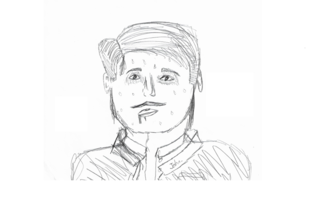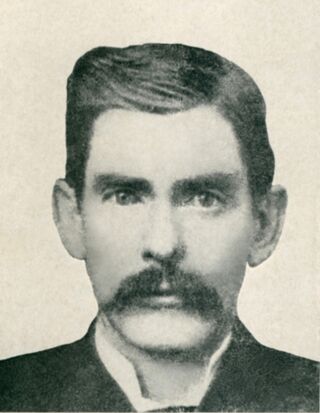Unconscious
Subconscious Communication Through Drawing
Analysis of a subconscious self-portrait.
Posted October 30, 2022 Reviewed by Jessica Schrader
Key points
- We become aware that ideas have arisen from our subconscious through dreams or intuitive feelings.
- Subconscious drawing and talking are two other ways the subconscious can communicate.
- The subconscious can communicate creatively in many forms.
Through work with my patients, I have learned that subconscious knowledge is communicated with the conscious self in many ways. Most commonly, we become aware that ideas have arisen from our subconscious through dreams or intuitive feelings.
Direct interactions with the subconscious also have yielded some fascinating variations regarding how its information can be transmitted.
A Subconscious Self-Portrait
In a recent post, I shared the story of how I helped “Daniel,” a 14-year-old with anxiety, resolve his fear that he was being followed by a demon. We did so through interactions with his subconscious. At a subsequent session, we worked on improving his self-confidence so that he could better deal with his anxiety, by exploring some of his subconscious abilities. I asked his subconscious to draw a self-portrait.
Daniel spent 15 minutes drawing a picture with a pencil, and then handed it to me without looking at it. He said his subconscious had drawn it, but that Daniel had not seen it.

The drawing revealed the face of a mustached sweating man, with some substance trickling out of his mouth. On his left lapel was written “John.” The neck collar was open. (See the picture on the left.)
“Is your subconscious named John?” I asked.
“Yes.”
“How old is John?”
“36.”
“Does John have a last name?” I asked.
Daniel checked with his subconscious and smiled. He said, “His last name is ‘Holiday.’”
I typed on a web search line, “John Holiday 36.” The search revealed “John ‘Doc’ Holliday” of OK Corral fame. I asked Daniel, “How do you spell Holliday?”
“With two L’s,” he said. Then added, “I know who it is. It’s John ‘Doc’ Holliday.”
“How do you know?” I asked with some amazement.
“I’ve been to his gravesite in Glenwood Springs, Colorado. My grandparents took me there.”
“Why did they do that?” I asked.
“We were visiting Colorado. It’s a famous site,” he offered.
“What do you know about him?”
“Very little,” he replied. Then he blurted, “I know where he’s buried.”
“Hold on a moment,” I said. I looked up Doc Holliday on Wikipedia. “OK, now ask your subconscious to tell you about him.”
Daniel closed his eyes briefly. He said in a monotone, “Doc Holliday was born in Georgia. His mother died when he was young. He became a dentist and contracted tuberculosis on the job. He spoke several languages. Doc moved the Southwest to a hot, dry climate where he might deal better with TB. He became a gambler who later was associated with Wyatt Earp, who wore a trench coat. He moved with Wyatt to Prescott and then Tombstone, Arizona. He was deputized by Wyatt Earp, and then was involved in a gunfight with five cowboys at the OK Corral. His wife was Kate.”
“That’s odd,” Daniel interrupted his subconscious's narrative in a surprised tone. He looked a bit perplexed. “My girlfriend’s Kate.”
Daniel’s voice then again became monotonous as his subconscious continued its narration. “He then moved to Glenwood Springs where he heard he could take better care of his TB in the hot springs. But then he died. In bed. Because of his tuberculosis. His last words were, ‘This is funny.’”
I found that most of what Daniel said matched what was listed in Wikipedia. I asked, “Why were his last words, ‘This is funny?’”
“I knew those were his last words,” said Daniel. “But my subconscious just told me that Doc thought it was funny that he died without his boots on. He had always expected to die in a gunfight.” Daniel added, “Even though Doc was a famous gunslinger he only killed a couple of people.” This statement also was corroborated by the Wikipedia article.

Outcome
I looked up a photo of Doc Holliday from 1881 (see photo on left). It was similar to the drawing by Daniel’s subconscious except for the sweat, substance trickling from his mouth, and distressed eyes.
I wondered why Daniel’s drawing included those features, and then realized that I knew the answer, as I am a pediatric pulmonologist. Daniel’s drawing showed symptoms of a man dying from tuberculosis, which include sweating and coughing up blood, which might have been trickling from his mouth. Thus, did his drawing represent a deathbed picture?
Daniel may have learned a lot more about Doc Holliday from his visit to the gravesite than he consciously remembered. If this was the case, then his drawing of Doc Holliday with TB was one way that his subconscious provided him with information about the illness that caused Doc Holliday’s death.
It is curious that the subconscious identified the drawing regarding Doc Holliday as its self-portrait. Did Daniel identify in some way with Doc Holliday, e.g., his observation about the name “Kate”? Or, did the subconscious want to relate its story of Doc Holliday’s life, and used my request to draw a “self-portrait” as a vehicle to communicate this knowledge?
Takeaway
As demonstrated in this post, in addition to communicating creatively through dreams and intuition, the subconscious also appears to have creative ways of communicating more directly.
References
More information about hypnosis and its use for communication with the subconscious is available in the 2021 book "Changing Children’s Lives with Hypnosis: A Journey to the Center," by Ran D. Anbar. Lanham, MD: Rowman & Littlefield.




